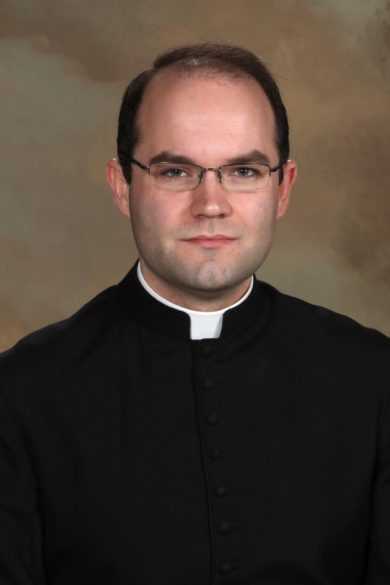SPIRIT AND TRUTH
By Father Aaron Williams
Of all the liturgies of Holy Week, the Easter Vigil has undergone the most extensive changes over time. It should be noted that the earliest sources we have for this liturgy (c 2nd century) point toward the Mass of Holy Saturday as originally encapsulating all the mysteries of the Triduum, which is one of the reasons historically a Mass was not celebrated on Good Friday. Eventually, however, these mysteries were split into separate celebrations, and the focus of the Vigil Mass took on its own character, especially as the practice became more common to celebrate a separate Mass on the morning of Easter Day as well.

The vigil is intended to commemorate the mystery of our redemption (as considered apart from the celebration of the mystery of the Resurrection proper). All of the readings used are intended to remind us of the reason humanity needed to be redeemed, and how God in His Providence had prepared a way for that redemption since the dawn of time.
The hearing of several readings is essential to the character of the vigil. The pre-1955 form had seven readings total. The reforms of Pius X brought this down to five readings, and then the 1970 reform restored the readings which were lost but gives the option to reduce the number to no lower than five (including the epistle and the Gospel). The tendency should be avoided to reduce the readings simply to make theMass shorter. The vigil, as the most significant Mass of the liturgical year, necessitates that the faithful hear at least a large portion of these readings.
In all forms of the Vigil liturgy, the Mass begins with the preparation of the Paschal Candle. However, this rite underwent extensive changes in 1955. In its original form, the priest (dressed in a violet cope) blessed a small fire outside of the church which is used to light a small taper and carried inside. Once inside, the deacon brings forth a candle that is split into three ends in a sort of forked shape. The first end is lit and the deacon chants “The Light of Christ.” A little further into the church this is done again, and then again at the foot of the altar. When this is completed, the deacon chants a much longer form of the Exultet. This chanting of the Exultet consisted the actual blessing of the paschal candle, making this the only time prior to 1955 that a Deacon performed a blessing instead of the priest. In fact, if no deacon was available, the priest would change into a deacon’s dalmatic before performing this blessing.
During the Exultet, the deacon would stop at certain moments and work with the candle — inserting the incense grains, carving the date, and lighting it. When this is complete, the deacon would change into violet vestments and the vigil of readings began. The 1955 reform eliminated the three-ended candle and has the priest bless the paschal candle itself outside of the church, which is carried in by the deacon. The blessing of the candle during the Exultet was eliminated. This form is maintained in the modern rite as well, except white vestments are worn.
In the older form of the Easter Vigil, the litany of the saints is chanted following the last of the Old Testament readings. As at ordinations, the priest and deacon would prostrate themselves before the altar during this litany. Afterwards, the baptismal water is blessed. The litany constituted the Kyrie of the Mass, so after it is sung, the priest changes into white vestments and intones the Gloria. In the modern form, the Litany is saved until after the first half of the vigil is complete, and the Gloria is intoned after the last of the Old Testament readings. The priest never changes his vestment color, and the prostration is eliminated.
One significant point that priests and sacristans of which should be aware is the typographical error in the USA lectionary for the Easter Vigil. In the typical edition of the lectionary, as well as in the English editions of other countries, the Exodus reading is not followed by the standard “The Word of the Lord” conclusion. Rather, the reading ends with the phrase “…the Israelites sang this song to the Lord:” – with everything else following being omitted, and immediately the Canticle which follows is sung by the choir. This is a very ancient practice which is retained in the modern form of the rite and adds a small element of drama to the Exodus reading by allowing the choir to ‘finish’ the reading off with the following canticle. The form of the reading which is given in the USA edition is only used if the following Canticle is omitted and a period of silence is given instead.
(Father Aaron Williams is the administrator at St. Joseph Parish in Greenville.)
